 It's going to be a busy late-March and into April.
It's going to be a busy late-March and into April.
- Another ‘Star Night’ hosted by Eskdale School
- A visit the Whitby Scouts to help them prepare for their Astronomy badge
- An event at Whitby Youth Hospital for students of Ayresome Primary School
- A new star party venue: Northcliffe and Seaview Holiday parks at High Hawsker
- and possibly more... [Read more about Star party, Visits and Events]
- Log in to post comments

 The first of the events (a last minute unscheduled event on the 18th) was predominantly clouded out. Mark and Keith therefore enrolled the scouts in helping to demonstrate the scale solar system.
The first of the events (a last minute unscheduled event on the 18th) was predominantly clouded out. Mark and Keith therefore enrolled the scouts in helping to demonstrate the scale solar system. 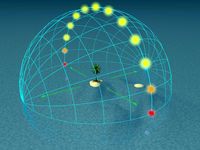 The date of the Vernal Equinox and officially the start spring in the northern hemisphere falls on March 20th this year. This is when the Sun's path - the ecliptic - first crosses the celestial equator on its apparent journey northwards into the sky...
The date of the Vernal Equinox and officially the start spring in the northern hemisphere falls on March 20th this year. This is when the Sun's path - the ecliptic - first crosses the celestial equator on its apparent journey northwards into the sky... 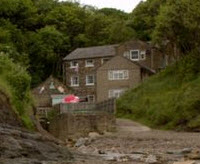 If skies are reasonably clear on Feb 25th we have been invited to host a star party down at Boggle Hole Youth Hostel. The event commences at 19:00h until around 20:30h.
If skies are reasonably clear on Feb 25th we have been invited to host a star party down at Boggle Hole Youth Hostel. The event commences at 19:00h until around 20:30h.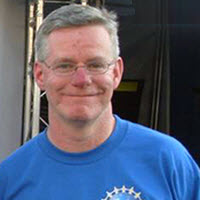 "So what are gravity waves", Prof Hendry asked? How did we detect them, and what can they tell us about the Universe. It took Einstein to figure out gravity’s true modus operandi. Gravity, Einstein showed, did not just make what goes up always come down. Gravity made the universe go round! ...
"So what are gravity waves", Prof Hendry asked? How did we detect them, and what can they tell us about the Universe. It took Einstein to figure out gravity’s true modus operandi. Gravity, Einstein showed, did not just make what goes up always come down. Gravity made the universe go round! ... 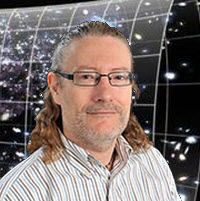 Bard Gibson is the Professor of Astrophysics director at the Centre for Astrophysics in Hull. He and his research team use some of the most powerful computers available to generate simulations of large scale structures in the Universe (such as galaxies). And that's what his talk was about...
Bard Gibson is the Professor of Astrophysics director at the Centre for Astrophysics in Hull. He and his research team use some of the most powerful computers available to generate simulations of large scale structures in the Universe (such as galaxies). And that's what his talk was about... 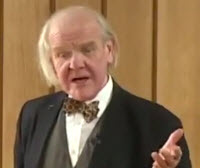 Allan's chosen subject this year Mary Somerville-the Lady Mathematical Astronomer, one of the first serious scientific woman of the 19th century, a ‘grand amateur', of independent means who could pursue her passion to a professional level. In and an age when scientific work was undertaken by men, very few women could be counted as equal to their male scientific peers...
Allan's chosen subject this year Mary Somerville-the Lady Mathematical Astronomer, one of the first serious scientific woman of the 19th century, a ‘grand amateur', of independent means who could pursue her passion to a professional level. In and an age when scientific work was undertaken by men, very few women could be counted as equal to their male scientific peers... 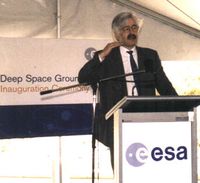 As far back as 1982, Prof Southwood recalled, he was present at the meeting at which the Cassini mission to Saturn stemmed. David remembers the date well – June 30th – his birthday.
As far back as 1982, Prof Southwood recalled, he was present at the meeting at which the Cassini mission to Saturn stemmed. David remembers the date well – June 30th – his birthday. 